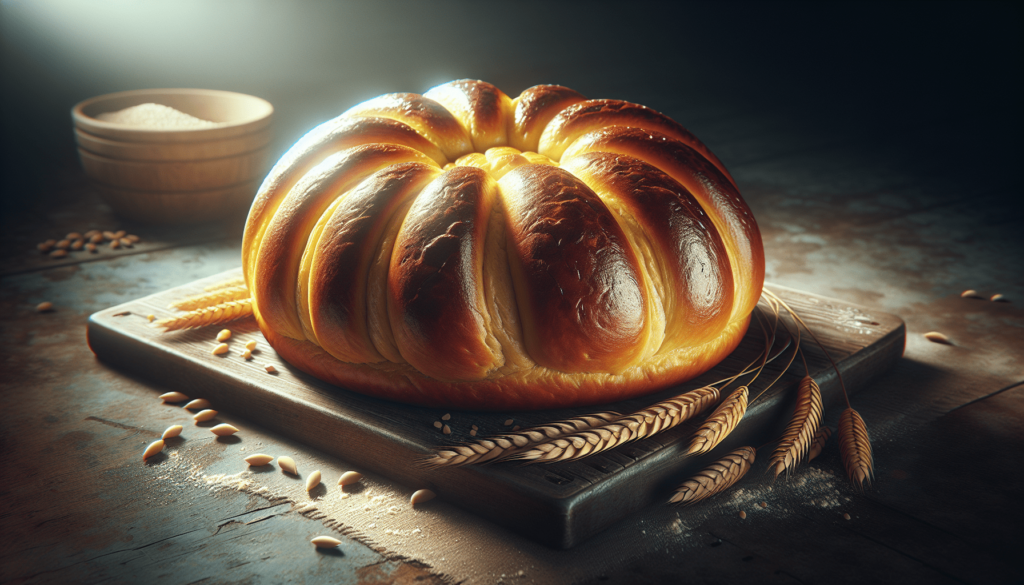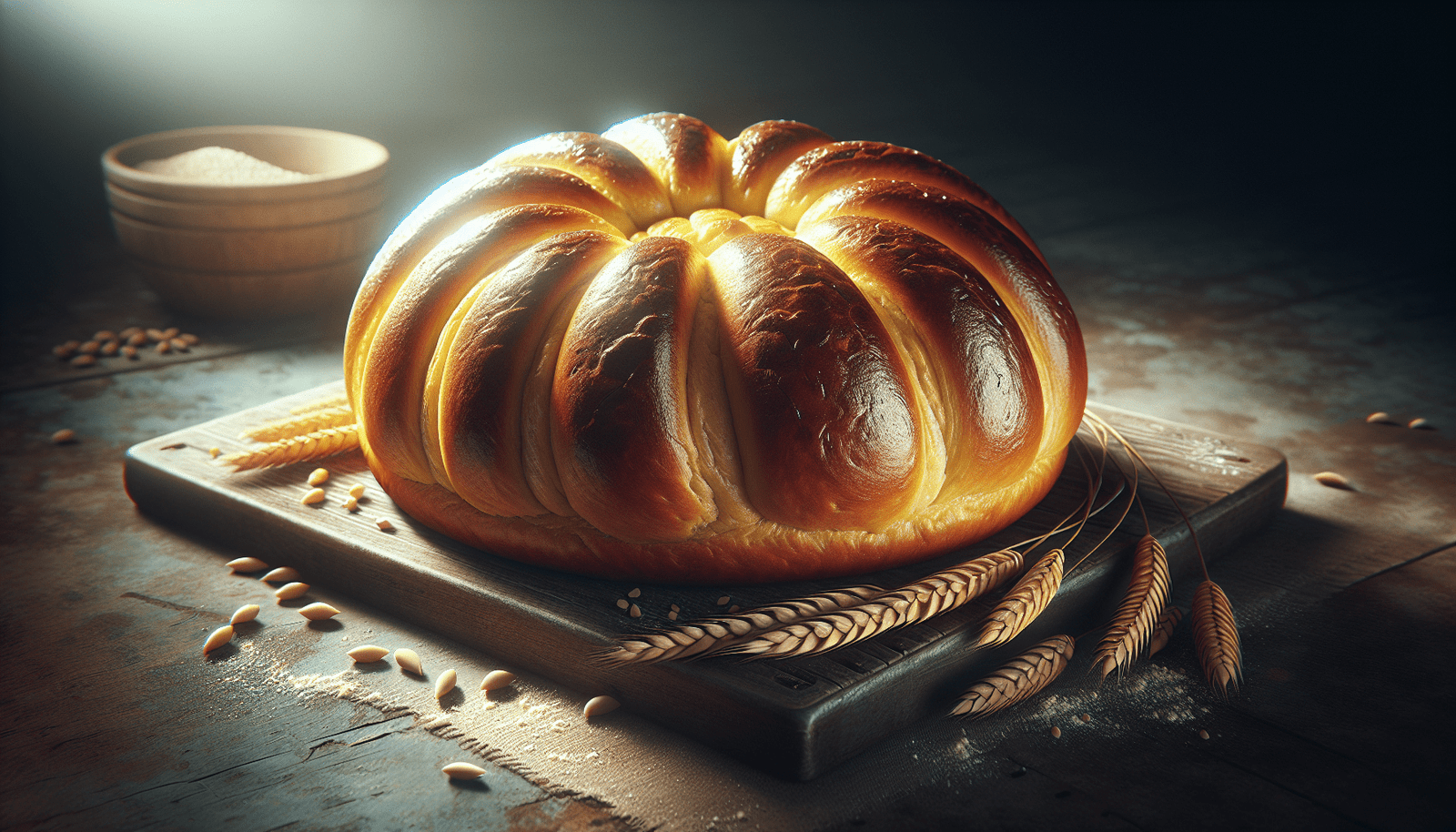Have you ever wanted to try your hand at making Jamaican Hard Dough Bread? Look no further! In this article, you will find a delicious and authentic Jamaican Hard Dough Bread recipe that is easy to follow. With its crusty exterior and soft, pillowy interior, this bread is the perfect accompaniment to any meal or a tasty snack on its own. Get ready to impress your friends and family with your baking skills and enjoy the unique flavors of Jamaica right in your own kitchen!

Ingredients
To make Jamaican Hard Dough Bread, you’ll need the following ingredients:
All-purpose flour
The main component of the bread, all-purpose flour provides the necessary structure and body. It is readily available in most grocery stores.
Granulated sugar
Adding sweetness to the bread, granulated sugar helps balance the flavors and enhances the overall taste.
Salt
Salt is essential for flavoring the bread and ensuring the dough rises properly.
Unsalted butter
Butter adds richness and moisture to the bread. Using unsalted butter allows you to control the amount of salt in the recipe.
Active dry yeast
Yeast is responsible for leavening the bread. Active dry yeast needs to be activated before use, giving the bread its light and fluffy texture.
Water
Water is added to activate the yeast and help bind the ingredients together.
Milk
Milk adds moisture and richness to the bread, creating a softer texture and richer taste.
Preparation
To make Jamaican Hard Dough Bread, follow these step-by-step instructions:
Activate the yeast
In a small bowl, combine the active dry yeast, warm water, and a pinch of granulated sugar. Stir gently and let it sit for about 5 minutes until the mixture becomes frothy. This indicates that the yeast is active and ready to be used in the dough.
Mix the dry ingredients
In a large mixing bowl, whisk together the all-purpose flour, granulated sugar, and salt. This ensures that the dry ingredients are evenly distributed throughout the dough, resulting in a well-balanced flavor.
Cut in the butter
Using a pastry cutter or your hands, cut the unsalted butter into the dry ingredients until the mixture resembles coarse crumbs. This step ensures that the butter is evenly distributed and creates pockets of moisture in the dough.
Add the yeast mixture and liquids
Pour the activated yeast mixture and milk into the dry ingredients. Mix until the dough starts to come together, then transfer it to a lightly floured surface.
Knead the dough
Knead the dough for about 10 minutes until it becomes smooth and elastic. This process helps develop the gluten in the flour, giving the bread its characteristic chewiness and texture.
Let the dough rise
Place the dough in a greased bowl, cover it with a clean kitchen towel, and let it rise in a warm place for about 1 to 2 hours, or until it has doubled in size.
Punch down and shape the bread
Once the dough has risen, gently punch it down to release any air pockets. Shape it into a loaf or divide it into smaller portions to create individual rolls or buns.
Let it rise again
Place the shaped dough on a greased baking sheet or in a loaf pan, cover it with a kitchen towel, and let it rise again for about 30 minutes to 1 hour, or until it has risen slightly.
Bake the bread
Preheat your oven to 375°F (190°C). Bake the bread for about 25 to 30 minutes, or until it has a golden brown crust and sounds hollow when tapped on the bottom. Remove it from the oven and let it cool on a wire rack before slicing and serving.
Tips and Variations
Here are some tips and variations to consider when making Jamaican Hard Dough Bread:
Use bread flour for a chewier texture
If you prefer a chewier texture, you can substitute bread flour for all or a portion of the all-purpose flour. Bread flour has a higher protein content, which helps create a chewier and denser bread.
Add raisins or currants for a fruity twist
For added flavor and sweetness, you can incorporate raisins or currants into the dough. Simply fold them into the dough during the kneading process.
Sprinkle sesame or poppy seeds on top for added flavor
For an extra burst of flavor, sprinkle sesame or poppy seeds on top of the bread before baking. This adds a touch of crunch and enhances the overall taste.
Try using coconut milk instead of regular milk for a tropical twist
To infuse the bread with a tropical flavor, replace the regular milk with coconut milk. This gives the bread a hint of coconut and adds a unique twist to the traditional recipe.
Serving and Storage
Once your Jamaican Hard Dough Bread is baked and ready, here are some serving and storage suggestions:
Serve the bread warm or toasted with butter or jam
Jamaican Hard Dough Bread is delicious when served warm or toasted. Slather it with butter or your favorite jam for a delightful breakfast or snack.
Store in an airtight container at room temperature for up to 3 days
To keep the bread fresh, store it in an airtight container at room temperature. It will stay soft and flavorful for up to 3 days.
Freeze slices for longer storage
If you can’t finish the bread within 3 days, you can freeze individual slices. Wrap them tightly in plastic wrap or place them in freezer bags, and they will keep well for several weeks. Simply thaw and toast before enjoying.

History of Jamaican Hard Dough Bread
Jamaican Hard Dough Bread has a rich history that can be traced back to the British colonial period. Here are some key points in its origin:
Origins in British colonial period
Jamaican Hard Dough Bread has its roots in the British colonial period when British bakers brought their bread-making techniques to Jamaica.
Influence from British bread-making techniques
The bread-making techniques brought by British bakers heavily influenced the style of Jamaican Hard Dough Bread. The use of all-purpose flour and the incorporation of dairy products became prominent features in the recipe.
Adaptation to local ingredients and flavors
Over time, Jamaican Hard Dough Bread adapted to the local ingredients and flavors readily available in Jamaica. This resulted in a unique twist on the traditional bread, making it distinctly Jamaican.
Cultural Significance
Jamaican Hard Dough Bread holds a special place in Jamaican culture and cuisine. Here is a glimpse of its cultural significance:
Popular breakfast choice in Jamaica
Jamaican Hard Dough Bread is a popular choice for breakfast in Jamaica. It is often enjoyed with a variety of toppings, such as butter, cheese, or Jamaican ackee and saltfish.
A staple in Jamaican cuisine
Jamaican Hard Dough Bread is a staple in Jamaican cuisine. It accompanies many traditional dishes, including jerk chicken, curry goat, and oxtail stew.
Often paired with ackee and saltfish, a national dish
The combination of Jamaican Hard Dough Bread with ackee and saltfish is a classic and beloved Jamaican pairing. Ackee and saltfish is the national dish of Jamaica, and the bread perfectly complements its flavors.
Enjoyed during holidays and celebrations
Jamaican Hard Dough Bread is often enjoyed during holidays and festive celebrations. It is a symbol of togetherness and shared meals with loved ones.
Health Benefits of Jamaican Hard Dough Bread
In addition to its delicious taste and cultural significance, Jamaican Hard Dough Bread offers several health benefits. Here are a few:
Good source of carbohydrates for energy
Jamaican Hard Dough Bread is a great source of carbohydrates. Carbohydrates are the body’s primary source of energy, making this bread an excellent choice for active individuals.
Contains essential nutrients like iron and vitamins
This bread contains essential nutrients such as iron and vitamins. Iron is important for proper blood circulation, while vitamins help support overall health and well-being.
Helps maintain a healthy digestive system
The fiber content in Jamaican Hard Dough Bread helps maintain a healthy digestive system. It promotes regular bowel movements and can aid in maintaining a healthy weight.
Common Mistakes to Avoid
To ensure your Jamaican Hard Dough Bread turns out perfectly, here are some common mistakes to avoid:
Using too much flour, resulting in a dry dough
Be careful not to use too much flour when kneading or shaping the dough. Adding too much flour can result in a dry and dense bread.
Not activating the yeast properly
Properly activating the yeast is crucial for a light and fluffy bread. Make sure the water is warm but not too hot, and give the yeast enough time to activate and become frothy.
Not allowing enough time for the dough to rise
Rushing the rising process can result in a dense and flat bread. Give the dough enough time to rise properly, allowing it to double in size before proceeding to the next step.
Overbaking the bread, leading to a tough crust
Keep a close eye on the bread while it bakes to prevent overbaking. Overbaking can result in a tough crust that may be difficult to chew.
FAQs
Here are some frequently asked questions about Jamaican Hard Dough Bread:
Can I use instant yeast instead of active dry yeast?
Yes! Instant yeast can be substituted for active dry yeast in the same quantity. However, since instant yeast does not require activation, you can add it directly to the dry ingredients.
Can I substitute whole wheat flour for all-purpose flour?
Yes, you can substitute whole wheat flour for all-purpose flour, but keep in mind that the texture and flavor of the bread will be slightly different. The bread may be denser and have a nuttier taste.
Can I use a bread machine to make Jamaican Hard Dough Bread?
Yes, you can use a bread machine to make Jamaican Hard Dough Bread. Simply follow the manufacturer’s instructions for mixing and kneading the dough before transferring it to a greased loaf pan for the final rise and baking.
Why is it called ‘Hard Dough Bread’?
Jamaican Hard Dough Bread gets its name from its distinct texture. The crust of the bread is firm and slightly hard, while the inside remains soft and pillowy. This texture gives the bread its unique character and sets it apart from other bread varieties.
Conclusion
Jamaican Hard Dough Bread is a delicious and versatile bread that can be enjoyed in various ways. Whether you’re having it for breakfast, as a snack, or accompanying a meal, this bread offers a taste of Jamaican cuisine and cultural significance. By following this recipe and incorporating the tips and variations, you can easily make Jamaican Hard Dough Bread at home and savor its authentic taste. Enjoy!


